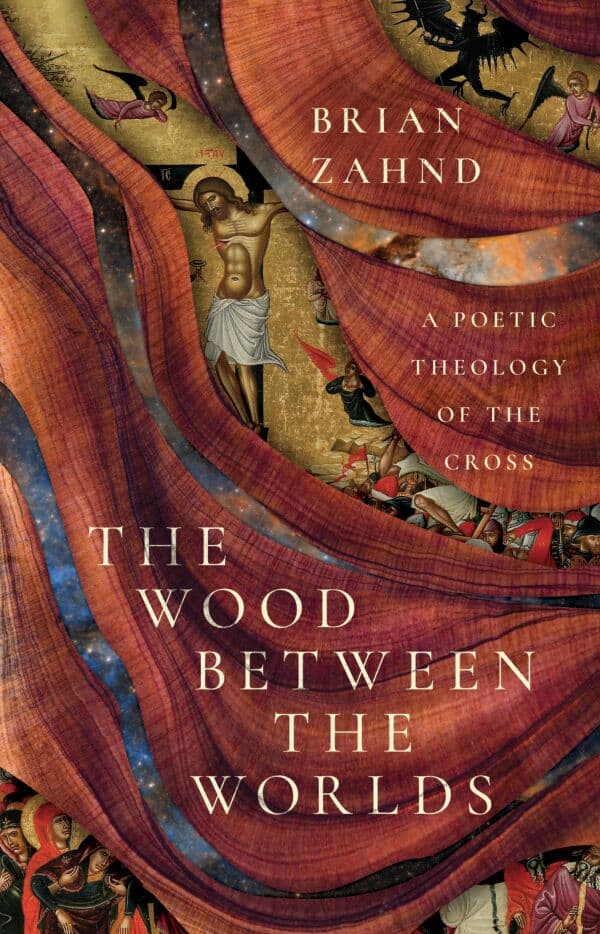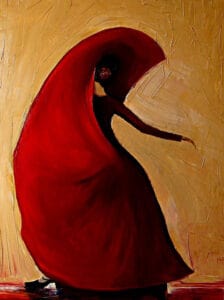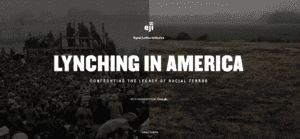 Brian Zahnd is the founder and lead pastor of Word of Life Church in St. Joseph, Missouri. Zahnd is the author of several books, including the brand new Wood Between the Worlds: A Poetic Theology of the Cross (releasing Feb. 6, 2024). Known for his theologically informed preaching and his embrace of the deep and long history of the church, Brian shares with us the inspiration behind this new book and surprising revelations he made during the writing process.
Brian Zahnd is the founder and lead pastor of Word of Life Church in St. Joseph, Missouri. Zahnd is the author of several books, including the brand new Wood Between the Worlds: A Poetic Theology of the Cross (releasing Feb. 6, 2024). Known for his theologically informed preaching and his embrace of the deep and long history of the church, Brian shares with us the inspiration behind this new book and surprising revelations he made during the writing process.
What inspired you to write a book on the significance of the cross? What has the crucifixion meant for you in your faith formation?
In 2016 my wife and I walked the Frances route of the Camino de Santiago—a 500-mile pilgrimage from St.-Jean-Pied-de-Port, France, to Santiago de Compostela, Spain. At the beginning of our 40-day walk, I felt the Spirit instruct me to seek out and pay attention to the crucifixes in the many churches and chapels along the Camino, and to ask in a reflective way, “What does this mean?” Day after day I was seeing, not the same crucifix but, multiple and different depictions of Jesus “publicly exhibited as crucified” (Galatians 3:1). After my 500-mile, 40-day walking meditation on the cross, I realized the meaning of the cross is not singular, but multifaceted. The multifaceted meaning of the cross is what I explore in this book.
What does the cross teach you about injustice and our roles as disciples of a crucified Christ?
If we can liberate our thinking about the cross from the theological poverty of single-meaning atonement theories, the cross becomes, among other things, a powerful indictment of the principalities and powers. The condemnation of Jesus Christ was issued from the gilded sanctuary of religion and the marbled hall of justice. Anachronistically, we might say that church and state in all their pomp and grandeur condemned Christ to crucifixion. The issuing of the death sentence passed upon Jesus of Nazareth had a religious pretense and legal legitimacy, but ultimately the cross puts these pretenses to shame. And regarding discipleship and the cross, Dietrich Bonhoeffer said it best: “When Christ calls a man, he bids him come and die.”
Tell us about the title, Wood Between the Worlds. What is the significance of the reference, and what do you hope readers take from it?
The title is taken from The Chronicles of Narnia where the wood between the worlds is a wooded grove that acts as a portal between different worlds. In my use of C.S. Lewis’ imaginative place, the cross of Christ is the wood between the worlds. There is the world that was and the world to come, and in between those two worlds is the wood upon which the Son of God was hung.
In the process of writing this book, what did you discover about the cross that you hadn’t considered before? What has stood out to you?
When I began writing this book, I had not planned on including a chapter on the significance of Mary’s sorrow as she stood near the cross of her son on Good Friday. But then I dreamed I was doing that very thing. So chapter 15—“The Sword-Pierced Soul of Mary”—came as a complete surprise. And I’m glad it did. What stood out to me the most was how the cross can speak to the entire spectrum of the human experience.
***
Adaptation from Wood Between the Worlds by Brian Zahnd from Chapter, 13, “The Lynching of the Son of Man”
Between 1880 and 1940 there were nearly 5,000 public lynchings of African Americans by white mobs in the United States. Most occurred in the former Confederate States of the South. These were not clandestine executions but public events, often attended by as many as 20,000 men, women, and children. Newspapers announced the time and location of the lynching. These gruesome spectacles had a carnival-like atmosphere. They were a repugnant, unabashed celebration of white supremacy. Onlookers would pose for pictures, smiling and pointing at the hanged victim.
Under the spell of the satan the crowd was immune to any sense of guilt, convinced of the rightness of their actions. They were demon- possessed. The crowd became the satan. But the cross of Jesus Christ is where the spell of mob violence and collective killing can and should be broken.
The only way for the Southern white mob at a lynching—the vast majority of whom thought of themselves as fine Christians—to be delivered from the demonic possession of white supremacist hate and murder was to see Jesus in the lynched Black man, or better yet, to see Jesus as a lynched Black man. They needed a Damascus Road moment where they heard Jesus say, “Southern Man, Southern Man, why do you lynch me?”
They had been mistaught in countless revival sermons and 19th-century hymns that the cross is what God inflicted on Jesus in order to satisfy justice. (As if justice could be satisfied with an unjust murder!) They could only see the cross as what they imagined to be an act of divine justice in the form of violent retribution rather than an injustice in the form of the public lynching of a Galilean Jew.
Any atonement theory that blinds us to how Jesus’ crucifixion places him in solidarity with every lynched African American is a theory that does not explain the cross; it only obfuscates it. In light of the history of lynching in America, the words of Simon Peter regarding the death of Jesus at the hands of wicked men take on a new resonance: “They put him to death by hanging him on a tree” (Acts 10:39).
The Lynching of Lloyd Warner
On November 28, 1933, a white mob of 7,000 people in St. Joseph, Missouri—my city—lynched and burned an 18-year-old Black man. His name was Lloyd Warner. He had been falsely accused with what was almost always the accusation that led to lynching—assaulting a white woman. Warner was arrested and placed in the courthouse jail. As word of Warner’s “crime” spread throughout the city, thousands gathered at the courthouse where a psychic-satanic maelstrom began to possess the crowd with bloodlust. Around 11:00 p.m. the sheriff surrendered Warner to the mob. The teenager was beaten, choked, and stabbed before being lynched and burned across the street from the courthouse. Some witnesses say he was still alive when he was drenched in gasoline and set on fire. To further add to the atrocity, the white girl who falsely accused Lloyd Warner later admitted to several newspapers that she “might have gotten the wrong one.” I can’t imagine the horror! The horror experienced not only by Lloyd Warner but by every Black citizen in St. Joseph.
On November 28, 2013—70 years later—I went to the site of this lynching. I prayed and confessed this horrible sin on behalf of my city. But the only real comfort I can find is in the conviction that the crucified Son of Man will dispel all darkness by the light of his cross, raise and exonerate Lloyd Warner, and bring his accusers and killers before the judgment seat of Christ.
The cross speaks in many ways, but to those who suffer from an ever-present threat of extra-juridical execution because of their ethnicity, it speaks in a unique way. Regarding how African American Christians have found solace through their faith in the crucified Son of Man, James Cone says,
“Faith that emerged out of the scandal of the cross is not a faith of intellectuals or elites of any sort. This is the faith of abused and scandalized people—the losers and the down and out. It was this faith that gave blacks the strength and courage to hope, “to keep on keeping on,” struggling against the odds, with what Paul Tillich called “the courage to be.”
What historians call the “Lynching Era” in America lasted for about 60 years, from just after Reconstruction to just before WWII. Thus it would be easy to pretend that white supremacist violence against African Americans has been left in the past. Sadly, this is not so. Lynchings as public spectacles where postcards are sold no longer occur, but the advent of cellphone cameras has made us aware of the systemic sin of unarmed African Americans killed by the police. Eric Garner, Michael Brown, Tamir Rice, Breonna Taylor, and George Floyd are just some of the names we know of African Americans who have died unjustly from police bullets and chokeholds. When Eric Garner and George Floyd gasped, “I can’t breathe,” it should remind us of the one unjustly executed by the Roman state who gasped, “I thirst.”
The cross is many things. One of the revelations of the cross is the divine repudiation of systems that seek to dominate a minority population through lethal force. When the powers that be justify their actions with empty euphemisms like “appropriate use of force,” the cross calls them to account. No doubt Pontius Pilate deemed the sentence he passed upon Jesus of Nazareth an “appropriate use of force,” but the whole world now knows otherwise. Maybe that’s why Pilate’s wife had nightmares, and sent word to her husband saying, “Have nothing to do with that innocent man, for today I have suffered a great deal because of a dream about him” (Matt. 27:19).
I write as a Roman and not as a Jew. I write as a white man and not as an African American. I can only try to gain some sense of the Black experience in white America by listening to the voices of my Black brothers and sisters. So I will yield the closing to James Cone and the conclusion of his book, The Cross and the Lynching Tree.
“The lynching tree is a metaphor for white America’s crucifixion of black people. It is the window that best reveals the religious meaning of the cross in our land. In this sense, black people are Christ figures, not because they wanted to suffer but because they had no choice. Just as Jesus had no choice about being lynched. The evil forces of the Roman state and of white supremacy in America willed it. Yet, God took the evil of the cross and the lynching tree and transformed them both into the triumphant beauty of the divine. If America has the courage to confront the great sin and ongoing legacy of white supremacy with repentance and reparation, there is hope “beyond tragedy.”
***
This excerpt is adapted from Wood Between the Worlds by Brian Zahnd. ©2024 by Brian Zahnd. Used by permission of InterVarsity Press.
 Brian Zahnd is the founder and lead pastor of Word of Life Church in St. Joseph, Missouri. Known for his theologically informed preaching and his embrace of the deep and long history of the church, Zahnd provides a forum for pastors to engage with leading theologians and is a frequent conference speaker. He is the author of several books, including When Everything’s on Fire, Sinners in the Hands of a Loving God, A Farewell to Mars, and Beauty Will Save the World. His latest book is Wood Between the Worlds.
Brian Zahnd is the founder and lead pastor of Word of Life Church in St. Joseph, Missouri. Known for his theologically informed preaching and his embrace of the deep and long history of the church, Zahnd provides a forum for pastors to engage with leading theologians and is a frequent conference speaker. He is the author of several books, including When Everything’s on Fire, Sinners in the Hands of a Loving God, A Farewell to Mars, and Beauty Will Save the World. His latest book is Wood Between the Worlds.


